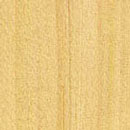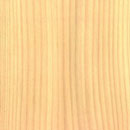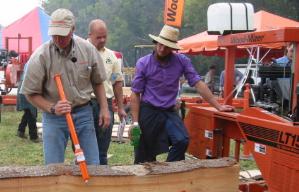Reprinted with permission from the Woodworker's Journal eZine.

When he retired, after years of teaching and providing advice to the wood industry, Dr. Gene Wengert, just couldn't stop being helpful. So he's become the Wood Doctor's Rx, LLC at WOODWEB.com ... a site where woodworking professionals come to get answers and share advice. Gene is the senior resident expert on the process of turning raw timber into lumber and regularly consults with the wood industry. As well as answering questions, he helped create a group of online calculators that took the guesswork out of estimating board feet, wood shrinkage, lumber weight, and even tree value.
It all started when Gene graduated from the University of Wisconsin back in 1964. His degree was in meteorology, but his first job was working on the weathering of wood for the U.S. Forest Products Laboratory. He became an expert on the affect temperature, moisture, and light had on wood. He soon found he preferred education to research, however, and switched to extension services, first in Virginia and then back in Wisconsin. That brought him in contact with both the commercial and hobbyist levels in wood processing. He became an expert in log grading and determining their best use ... the first step for a saw miller, and then developed expertise on through to sawing, drying, gluing and machining.
He retired in 1992. That soon turned into semi-retirement when he met up with Michael Poster, who ran a small commercial shop. Michael wanted to create the Woodweb site, a place with good reliable information for woodworkers and wood processors.
![]()
"A lot of what's on the Internet is anecdotal," Gene explained. "Meaning someone saw something and had other facts in the back of their mind and then put one and one together and came up with six. For instance, one of the common things you hear online is that the sap is down in the tree during the winter ... some people interpret that to mean that the tree is dry as a bone and winter's the time to cut it down. But the truth is ... there's plenty of water in the tree in the winter and summer and that never changes."
One of the most important contributions Gene provided for the site were the equations for a set of online calculators designed to help wood processors - for big or small operations.

"You can calculate the weight of lumber," Gene described, "The amount of shrinkage you can expect as the wood dries, determine the board feet of a piece of wood, or even estimate the number of boards you can expect to get out of a certain-sized log. It's really just standard everyday stuff that any student could look up in a book. Here though, you don't need a book. We call it 'plug and chug' because you just plug in the numbers and it chugs away."
According to Gene, interest in this kind of information is high because the price of the four major woods -- cherry, walnut, sugar (or hard) maple, and red oak -- have gone through the roof.
"People want to be careful with their money and don't want to waste this natural resource," Gene noted. "It's now the general attitude of the public ... let's just be more careful."
At Woodweb, people send him questions, and he'll do his best to answer. Those answers often become part of another aspect of Gene's online involvement ... the creation of a knowledge database for Woodweb users.
"People can search our short articles on, say ... solar kiln drives or a particular type of wood. It's reliable information, some of it generated for Woodweb and some that we've put back into general circulation from other sources. We're putting new stuff in all the time. A hobbyist or small businessman with a serious question will find it useful."
Offline ... and often compensated monetarily, Gene also keeps busy providing a wide range of advice to the wood processing industry.
"Someone sent me some wood recently that smelled bad and asked what's wrong." Gene recalled. "I took a sniff and realized there'd been a bacterial infection in the living tree and that odor wasn't going away. Someone sent me a sample of white pine and wanted to know why it wasn't like normal white pine ... it turned out to be spruce! I recently provided a technical review for a series of articles on moisture content and drying for American Woodworker magazine. Just this week I was down in Memphis at the American Hardwood Association headquarters, running a school for kiln operators. There were people there who process only eight thousand board feet a year and others who do up to 20 million, but drying wood follows the same principles no matter what the size."


White pine and Spruce
Otherwise, Gene keeps busy doing a little genealogy, getting ready for a bike ride across America, and even gets in a little woodworking. He got a good deal on a whole bunch of Powermatic equipment a few years ago ... band saw, table saw, planer, joiner ... and likes to do little projects like cutting boards in the shape of Wisconsin and making rocking chairs for the grandkids. His favorite wood is sassafras because he can afford it and it smells so nice (like root beer, Gene claims).
No matter what he's doing though, Gene says it's all fun, and he hopes he's making the world a better place.
Reprinted with permission from the Woodworker's Journal eZine.
